(NOTE: This is a repost of a blog from two days ago. I am having problems with my subscription service, and I hope this solves the issue.)
This photo post covers the first portion my time in the city of Oaxaca, in the state of Oaxaca, Mexico. In the pages that follow are 204 photos covering two all-day tours that I took, the first on October 1, 2012 and the second on October 3, 2012.
As usual, the photos in this post are thumbnail images. Please click on any photo to enlarge it. The thumbnails leave much to be desired as far as colors and resolution – plus the thumnails clip all of the edges. I use thumbnails for the post itself, because it gives people an opportunity to get a summary glimpse without downloading huge amounts of data for the high-res photos.
CLICK ON ANY PHOTO TO ENLARGE TO HIGH RESOLUTION
Monte Alban Ruins
Early on Monday, October 1, 2012, I embarked on the first all-day tour. This one begins with a trip to the ruins of Monte Alban, high atop a nearby hill. After that we tour several other places before returning to the city of Oaxaca.
Monte Alban is about 6,400 feet above sea level, and about 1,300 feet above the valley floor where the city of Oaxaca rests below. It was a socio-economic center for the Zapotec population, founded around 500 BC, lasting for about 1000 years.
This is the sign on the visitors center as we enter the ruins.
This is our tour guide … and elderly gentleman who had quite the personality. He literally treated us like school children. If we didn’t pay attention when he was talking, and if we couldn’t answer one of the many questions he asked throughout the tour, he was likely to scold us.
This is a 3-D map of the ruins we are about to visit. The visitors center is at the top left corner of this map.
If I remember correclty, this is the tree from which the resin for “Copal” insense” is derived. Copal is a sacred incense used in most Maya (and catholic) ceremonies in this part of the world.
A closeup of the tree.
Another fascinating tree with a great deal of character. I was getting a little impatient by now, because we only had about two hours to tour the ruins, and our school teacher tour guide was insisting on taking over a half hour just to show us wildlife and trees.
Looking down at Oaxaca city from the location of the ruins.
Another view looking at the valley. This one has a slight zoom, making the city look closer.
Finally, we visit our first structure.
From one side of the complex, looking out at many of the other ruins. This photo is better if you click on it to get a high-res view.
One of many ancient ruins, with a view of the valley below in the top right corner.
And another.
As the guide talked to our group, I was rapidly losing interest in his dialog, so I separated myself and enjoyed the ruins a little more quietly, taking in the energy and ambience with more silence.
A gorgeous view of the central area, encompassing many ruins.
And another beautiful view with the city in the background.
Just meandering around, mostly doing my own thing while keeping an eye on the group.
More magical vistas.
Taken from high atop one of the pyramids, with the city in the valley below.
Me, standing on one of the taller pyramids.
Still doing my own thing.
Fascinating Zapotec artwork.
I love the beautiful trees in the background.
More random views.
I did not try to remember names of pyramids, but if memory serves me this was the largest and tallest in the complex.
More interesting structures.
Monte Alban is famous for its decorative stela and obelisks.
This one is largely eroded.
Another one with more of the artwork still visible.
I believe the one above is called Stela 9. This plaque tells all about it.
This one is only partially standing.
Here is the plaque for the former. It is called Stela 18.
Looking inside one of the structures still being excavated. If you look closely you can see a wooden ladder inside.
This (and many of the photos that follow) is one of a huge number of obelisks and glyphs that are on display — original Zapotec artwork from the ruins.
As I explored the ruins, I could not help myself. I had to take a photo of my leg showing all the itchy bites I got while visiting Puerto Madero and Mazunte. I take it all in stride…
A view from the other end. Restoration work is still going on in this closer structure.
Another beautiful structure.
A lizard on the way back down the trail. I love how he almost blends in with the surrounding soil.
Visit To Woodcarving / Craft Workshop
Oaxaca is famous for it’s beautifully painted wood carvings. The second stop on our tour was to one of many shops around the area where such carvings are made by hand.
As we entered the workshop, I was fascinated by the fact that most of the carving (at least on larger objects) is done by using a machette. This man is in the early stages of carving what will turn into a colorful lizard with a large curving tail.
Cute … An otter?
Everything here is hand painted by a large crew of mostly young women.
More hand work.
Large wooden cats / cougars / mountain lions / bobcats.
Finished turtles on display. I would have taken many more photos of some of the amazing crafts, but photos were not allowed in the retail side of the shop.
An elephant skeleton.
Elaborate and colorful tropical birds.
Even a dragon.
A large lizard that still needs to be smoothed and painted.
Back to the original man, carving a new lizard. It is slowly taking shape, but still not fully recognizable.
The top curvy part will be the lizard’s body, and the flat block at the bottom will be intricately carved to form a swirling tail.
At his feet (if you click on the photo and look closely) is a finished lizard with elaborate painting. I can only assume that he is using it for inspiration in his new carving.
A young woman hand painting what looks like a bear.
A praying mantis on its side.
Oaxaca is famous for its “Dia De Los Muertos” (Day Of The Dead) celebrations. It is held at the end of October and first of November, but has nothing to do with Halloween. It is more a celebration of ancestors who have passed on. More on this in a future post (when I get to photos from Merida, Mexico).
This wooden skull-like carving is a famous image from the Dia De Los Muertos celebration.
Monastery Visit
The next stop on our tour was an ancient monastery. I apologize for not remembering the name. We arrived in a light rainstorm.
This is a photo of the site from the parking lot.
This minivan is our transportation. If you look closely, you can see that the parking area is wet from the rain.
The main attraction of this old monastery is this building, which no longer has a roof.
Looking through the exterior doors at the elaborate columns inside.
Another view, making it obvious that there is no roof.
Some of the beautiful stone artwork.
A different view of the interior.
From inside looking out.
My favorite tour guide explaining some of the finer details.
Interesting symbolism carved in the wall.
More exploration.
This is the inside of another part of the monastery, also with no roof.
I believe the tour guide said this was believed to be a baptismal font.
Outside the second building.
A Village Funeral
Soon we were back on the road enroute to our next destination. As we passed through a small village, we had to wait for a local funeral.
The procession was led by a small band. At this point, when I began taking photos, I did not realize it was a funeral procession.
Closser view of the band.
Women carrying flowers.
It was about now that I began to realize that this was a funeral. I started to feel a little guilty for taking photos like a tourist. Luckily, I was inside the van and my photoshoot was not very obvious.
The last photo I took of the procession.
Famous Black Clay — “Barro Negro”
Once back on the open road, we set out toward another famous Oaxaca attraction — pottery and other creations using black clay.
I snapped a couple of photos to show what this part of the valley looks like.
Lots of “maize” fields.
This is the sign at the entrance to the “Alfareria” or pottery shop of Dona Rosa. Aparently, she is quite famous when it comes to Oaxaca black clay.
This is a photo of Former U.S. President Jimmy Carter visiting Dona Rosa while she was still alive. They are holding a large black pot like many that are still on display in the shop.
Me standing beside a black clay sculpture of Dona Rosa. She is famous in this area for her techniques.
This is another photo of a man using the wheel-less technique. As I understand it, this special Oaxaca clay does not receive any glaze or dye at all. When it is fired in a Kiln, it comes out shiny and solid black.
This photo tells the story of how Dona Rosa did all of her pottery without a wheel (as does the shop today). The unglazed pots and sophisicated sculptures are all made using primitave indian methods.
For those who read Spanish, this photo tells more of her story.
Another view of her black clay statue.
A photo of former U.S. President Jimmy Carter standing in the same spot where I stood earlier.
Another photo on the wall bragging about one of President Obama’s daughters here in this same shop.
Our tour guide giving us a small demonstration of how these pots are made.
One of the beautiful finished products. Remember that this is handmade, without a wheel, and with no glaze.
Our guide showing us how they hand carve the intricate patterns into these pots. Yes, those decorations that look like flowers are actually handcarved holes in the pot itself.
Another gorgeous pot, showing the intricate handcarved holes.
This and the next four photos show some of the amazing creations available for purchase.
It was a long day with many stops. After we leave the black clay shop, our minivan returns to Oaxaca, and I enjoy a nice relaxing evening.
Hierve El Agua / Tule Tour
On Wednesday, October 3, 2012, I took a second all day tour — one that took us to five different sites, including Hierve El Agua, Mitla, and Tule.
As our SUV drove through the streets of Oaxaca on our way out of town, we passed this large mural created from tiles.
Arbol Del Tule
The first stop of our all-day tour was at the “Arbol Del Tule” or “Tree of Tule”. It is quite famous in this part of the world. It is located in the church grounds in the town center of Santa Maria del Tule. It is a “Montezuma Cyprus” tree. According to Wikipedia, it has the “stoutest trunk” of any tree in the world, and in 2001 it was placed on a UNESCO tentative list of World Heritage Sites. Even though it looks like multiple trees, DNA tests have proven that this is only a single tree.
This is a sign on the fence that surrounds the tree, giving various dimensions. If I read the sign correctly, the trunk is 58 meters (190 feet) in circumference and 14.05 meters in diameter (46 feet). Wikipedia gives different numbers, indicating that the diameter is 38.1 feet and the circumference is 119 feet.
A view of the tree from a nearby parking lot.
The trunk of the tree is surrounded by a green fence to keep people from going inside. The branches hang down low.
Me, touching one of the low-hanging branches.
A self-taken photo of me with the trunk in the background. If you click on the photo to enlarge it, you can see the whole trunk.
Another view of the whole trunk. Again, even though it looks like multiple trunks, this is proven to be a single tree.
Another photo of me with the tree.
And another.
This one is taken from a little further away.
Looking up into the massive trunk and branches.
A different, but similar angle.
Another view looking higher up into the inside of the tree.
the “Palacio Municipal” (Municipal Palace) in this small town, located just across the plaza from the tree.
This SUV is our tour vehicle for the day.
Textile Weaving Taller
Our next stop on the tour is a Taller (workshop) for weaving textiles.
This is the sign on the street as we enter the parking lot. There are many such workshops in this area. The sign reads “Casa Ollin. Weavers of rugs. 100% Natural dyes and Traditional Weaving demonstration. ENGLISH SPOKEN …”
A quick glilmpse of the surrounding mountains. Right now, we are perhaps an hour to the southeast of Oaxaca City.
The outside of the textile workshop, with our SUV parked in front.
The setup as we prepare to observe a short demo on the use of natural dyes. The plant materials in the above baskets are all used to produce varioius colors.
This woman gave us a short demonstration.
Talking about the handmade yarn itself.
I can’t remember if it was mold, spores, or tiny bugs, but whatever it is that lives on this rotting cactus leaf is used to produce a beautiful purple dye.
Our guide using the plants to create a couple of different colors on her hand.
I cannot remember what type of dye this one was.
A short demonstration on actually spinning the yarn.
This young man showed us how he uses the weaving machine to create intricate patterns etc…
I always wondered how they wove all those fancy patterns into the cloth. It looks like a very tedious process.
Lying on the ground, looking up at the underside of the fabric in process.
This photo, and the next two, are some of the beautiful hand woven fabrics hanging in the shop.
As we leave the textile shop, we get back in the SUV and drive for what feels like perhaps another hour.
Hierve El Agua
“Hierve El Agua” literally means “the water is boiling.” It is a set of natural rock formations and springs. It is located about 70 kilometers (44 miles) east of Oaxaca city in the town of San Lorenzo Albarradas.
I could not resist taking this photo of the sign. It is located on the road, at a place where we had to each pay 10 pesos to go further. For those who read Spanish, you can see that the sign is filled with misspellings, interesting multiple-line hypenations and backward “N”s etc.
A view from the SUV as we drive the last few kilometers.
A little police station that we pass along the way.
And a cute little church.
A sign at the top of the road. It reads “Sulfer water eyes”
Another sign attached to a unique tree. It reads “I am the source of life. I give you all that you need. I only ask that you protect me.”
Walking down the trail leading to the springs.
Further down the trail. You can now see some of the beautiful mountain scenery that surrounds us.
For some reason, I found myself feeling highly motivated today to take photos of plants, trees, and cactus etc… I love this little flowering plant.
More of the flowers mixed in with the scenery.
Continuing down the ten-minute trail.
Our destination is at the bottom of this path.
More scenery that I could not resist. It was a little hazy today.
A beautiful tree by the bottom of the path.
Lots of beautiful cacti (cactuses) on the side of this hill.
Finally at one of the springs that brings calcified life to this area. The water looks hot, but it is NOT hot. It is quite cool. The look of boiling comes from the bubbles in the water as the spring flows.
Another piece of the spring.
The water from the spring flows down across the rocks like this.
And it feeds into two beautiful sulfer-water pools. One is closed for some type of maintenance. I suspected it, but did not know for sure until I later looked it up. These two large pools are artificial, man made. Nevertheless, the calcium deposits on the pools are natural, as is the water in them.
This is the upper pool, which is quite dirty and off limits right now. It is undergoing some type of maintanence.
This is a distant view of the lower pool. It is the one shown in most all the tourist photos. The edge of the pool goes over the side of a cliff, giving breathtaking views.
The second pool up close.
Another of the second pool, showing how the water disappears into the mountains … and the mountains are literally miles away.
A different perspective.
And another one.
Swimming is allowed here, and I had my swimsuit with me, but the air outside was so cold I did not bother to change.
From the edge of the cliff, looking back to the other side of the sulfer pool.
This looks like a waterfall, but it is actually like a stalactite. What looks like water is calcified crystals, quite similar to that happens with stalactites and stalagmites in caves. I understand that there are a couple of little springs that feed this formation.
Another view of the calcified waterfall, taken from the cliff-side pool, using a zoom.
Another scenic view of the calcified waterfall.
At the lower pool, a view of the artifical wall at cliff’s edge. I’m guessing that if I were down below taking a photo, that the cliff where I am standing would also be quite beautiful, covered in white crystals.
And another slightly different view.
Three sweet ladies from northern Mexico, enjoyinig the view.
One of these ladies took a photo of me. I am barefoot, and yes, I did do considerable wading. The only problem is that the edge is quite rough, and then it gets deep quite fast.
I sat here and meditated quietly, enjoying the beautiful view.
My toes in the water. If you look close you can see just how rough this ledge is.
The exterior wall of the upper pool.
I love the patterns that form in this wall.
More of the same.
After finishing our visit, as we walk back up the trail, I was obsessed with these cacti, enjoying a fun photo shoot.
Wildflower and cactus.
Fun growth patterns.
As we drove away from the area, we passed this grapefruit tree.
And this amazing poinsettia tree.
Soon, we were back on the highway, headed back in the direction of Oaxaca city.
The Ruins of Mitla
Mitla is the second most important archelogical site found in the state of Oaxaca, and according to wikipedia, it is the most important one of the Zapotec culture. It is located 44 kilometers (27 miles) east of Oaxaca City, in the pueblo of San Pablo Villa de Mitla. The ruins of Monte Alban were more of a political center for the Zapotecs, while Mitla is considered to have been a religious center. For more information, see Wikipedia.
But before arriving at Mitla, we stopped at this large buffet. It had a sampling of every possible Mexican dish. I ate with a few people from Northern Mexico.
Finally in Mitla. You can see that the ruins here have gorgeous, elaborate, lattice artwork in the walls.
More beautiful artwork built right into the walls.
And more.
Me, standing on the steps of one of the temples.
And a closer view of your’s truly.
More of the original stone artwork.
These ruins are quite small compared to others I have visited — but very beautiful and ornate.
Another wall.
The same from a little further away.
Under a couple of the temples were small tunnels that led underground. I went into them both.
Once inside, looking back toward the entrance.
Stepping down a steep stone staircase leading into the other tunnel.
Inside one of the tunnels … some of the original artwork.
It was dark in here. This was taken with my flash. I didn’t know how much beauty was around me until I studied the photo.
Another photo inside a tunnel.
Me, inside, near one of the tiny entrances I had to crawl through.
And another tunnel view.
Back outside, I found this gorgeous, luminescent green beetle.
An old cathedral in Mitla, next to the ruins.
Mickey Mouse-like cactus on the ruin grounds.
A quick glimpse inside the church / small cathedral.
We are done here in Mitla and again hit the road with one final stop on our way back to the city of Oaxaca.
Fabrica De Mescal
Mescal is famous for this region of Mexico. It is a drink similar to tequila, but made slightly differently, from a different variety of cactus. Seeing how mescal is literally a trademark of Oaxaca, our last stop was a “Fabrica de Mescal” or “Mescal factory.”
This man is showing us the cactus from which Mezcal is made. Pay close attention to the cone-like part of the plant at the base of the leaves. It is really hard to see in this photo.
I don’t know exactly how it works, but a large fire is built in this pit, burned down to coals, and used to burn the huge “pine-cone-like” part of the plant. Somehow the heat and fire are necessary for the first step.
This is one of the pine-cone-like parts, from which all the leaves grow. It has been prepared for burning.
This is a bundle of the same, after having been burned in the fire.
It was late in the day, so we didn’t get to see this part in action. A horse is used to move this huge stone wheel around and around this structure. The burned cones are placed here and are totally smashed to a pulp by the repeated grinding.
A different view of the mill. The horse is harnessed to the outside of the wheel. I actually saw one from the window early in the day as we passed this place going in the other direction.
If you look closely, you can see one of the burned cones placed just below the front edge of the large stone.
What is left is this pulverized plant material, which is then placed in large vats while it ferments.
One of the horses used to operate the grinding wheel.
A young woman allowing people to taste test various flavors … and they have a lot of flavors. After people in our group were finished, we boarded our SUV and returned to the city of Oaxaca, where I enjoyed a nice quiet evening.
Copyright © 2013 by Brenda Larsen, All Rights Reserved
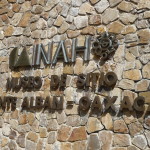
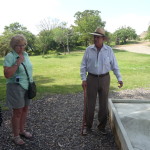
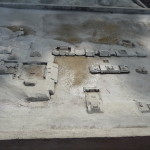
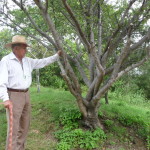
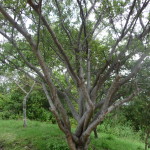
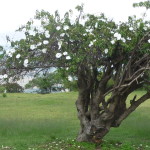
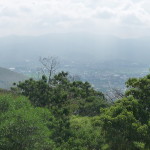
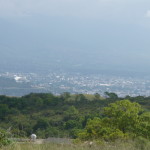
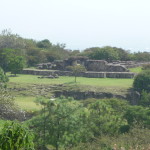
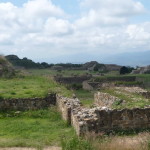
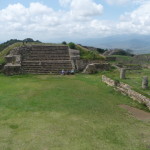
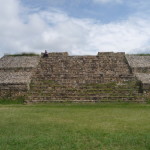
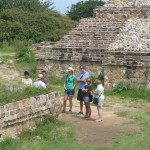
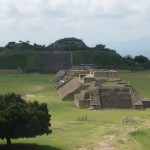
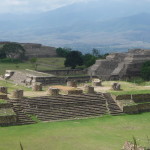
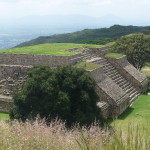
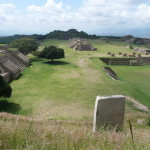
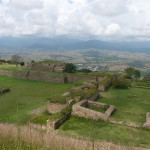
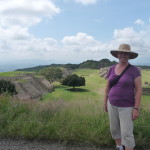
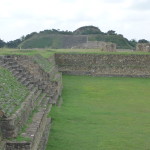
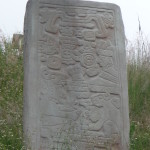
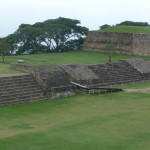
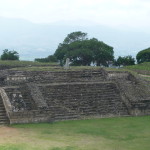
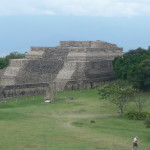
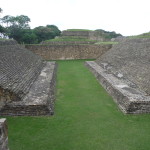
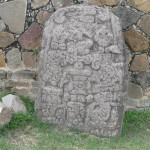
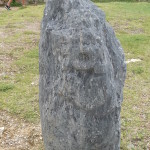
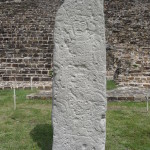
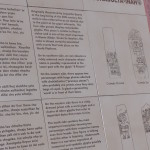
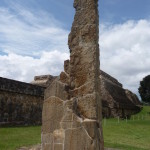
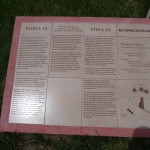
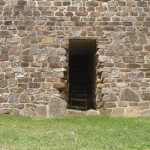
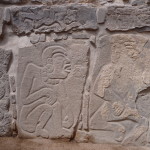
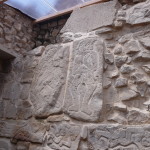
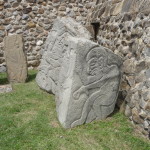
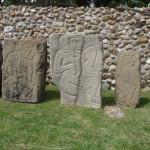
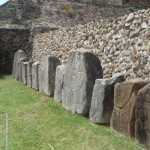
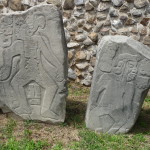
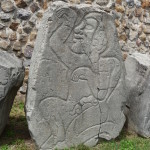
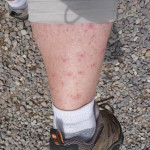
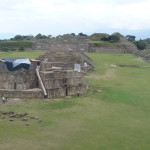
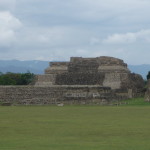
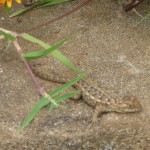
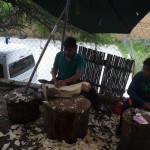
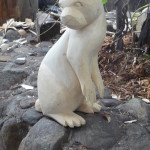
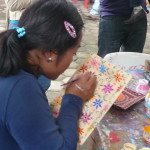
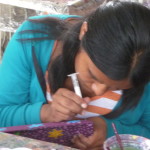
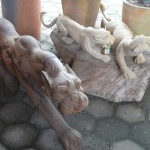
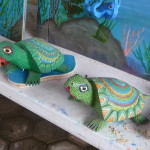
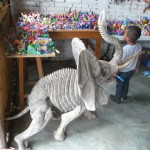
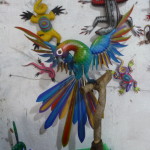
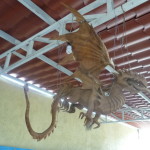
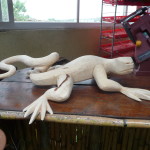
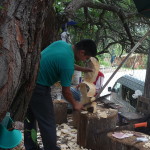
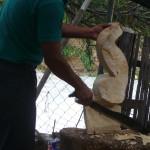
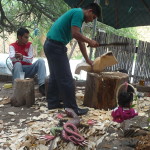
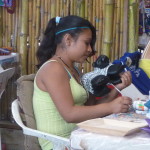
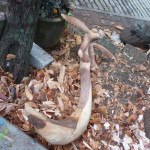
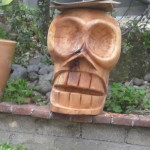
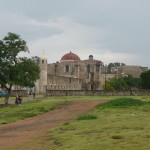
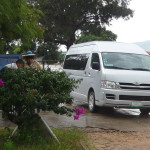
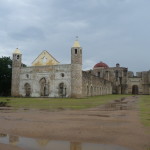
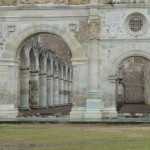
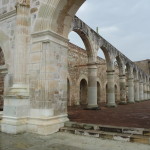
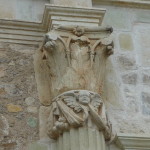
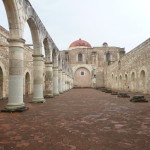
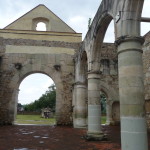
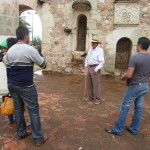
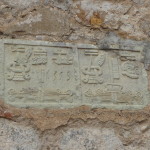
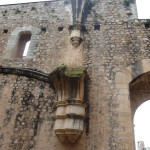
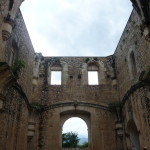
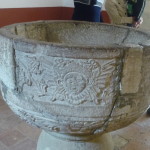
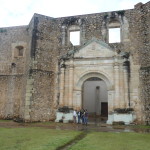
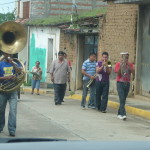
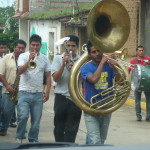
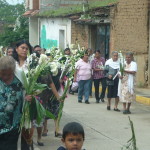
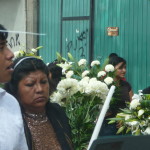
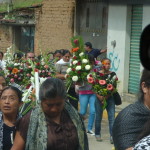
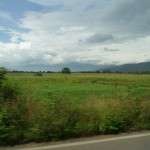

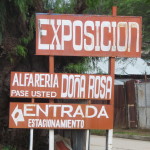
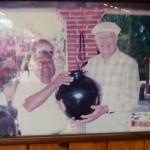
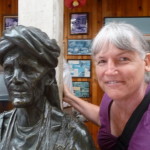
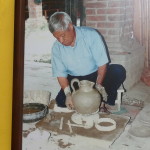
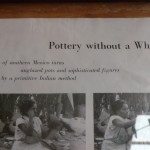
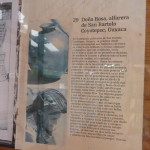
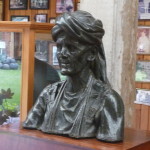
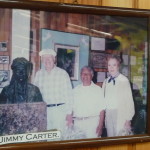
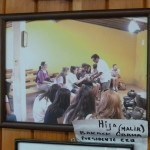
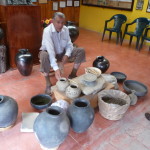
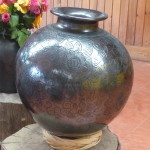
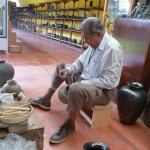
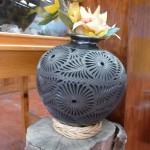
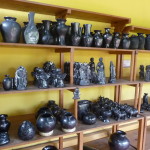
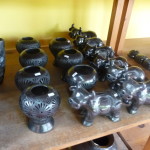
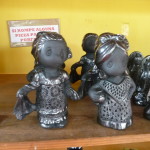

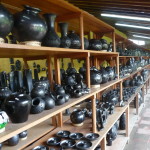
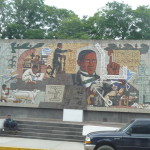
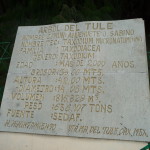
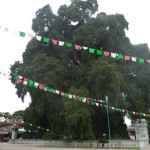
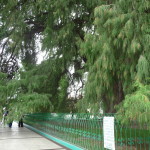
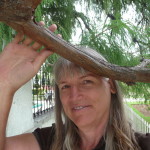
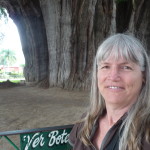
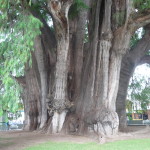
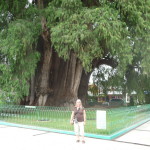
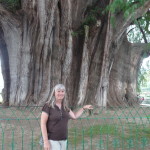
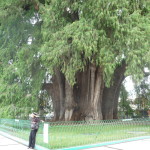
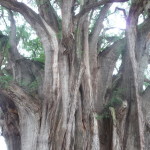
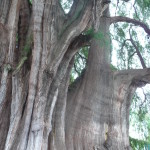
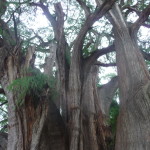
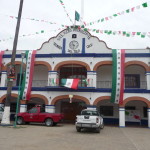
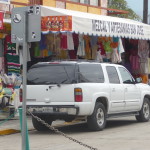
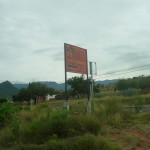
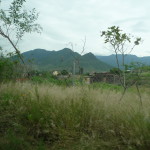
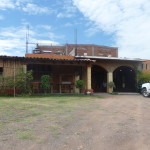
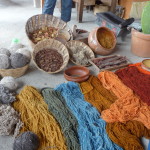
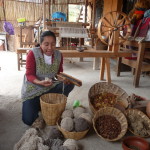
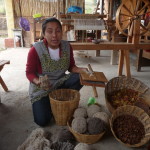
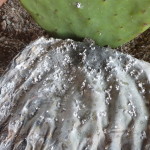
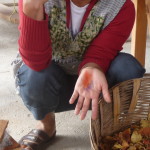
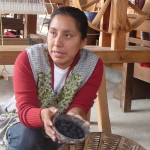
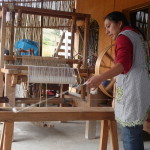
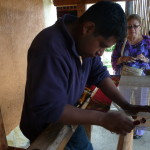
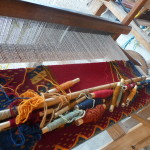
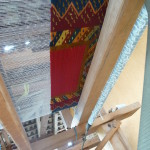
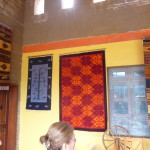
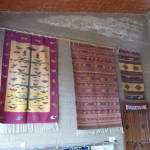
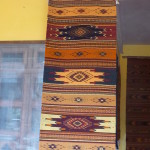
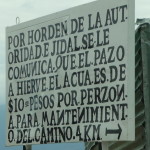
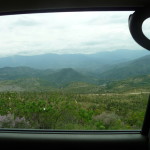
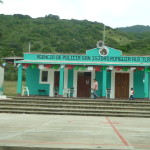
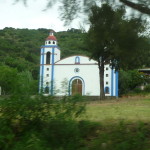
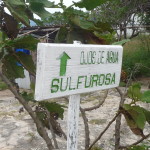
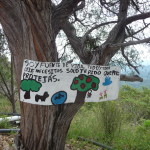
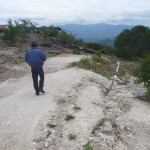
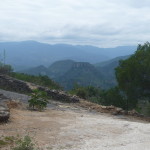
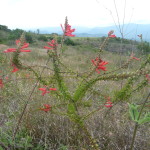
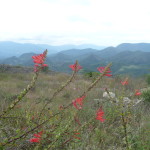
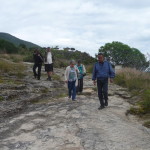
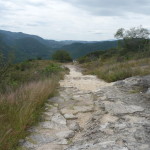
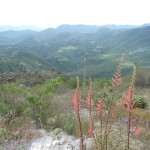
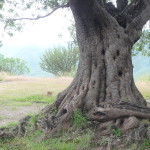
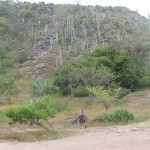
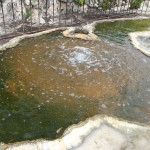
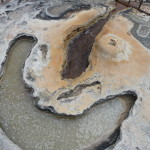
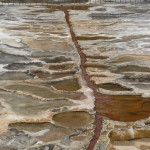
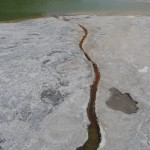
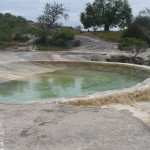
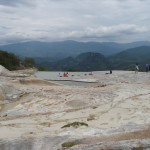
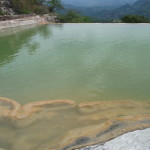
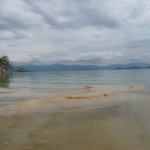
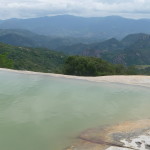
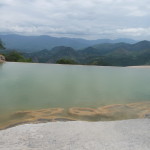
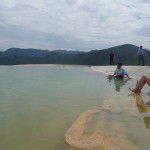
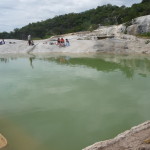
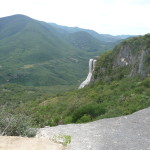
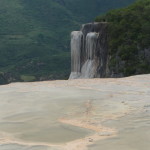
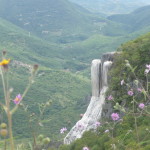
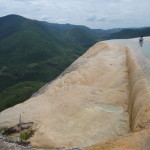
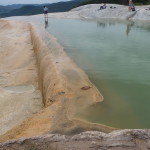
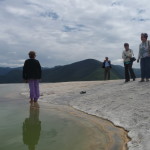
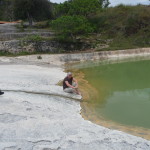
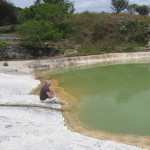
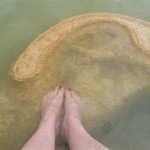
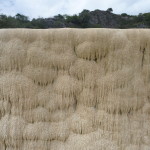
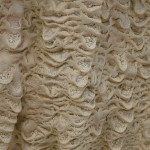
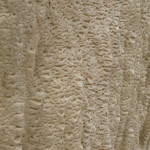
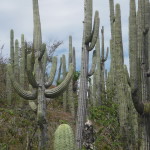
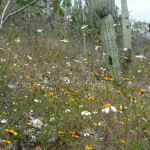
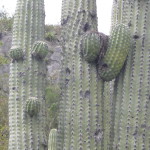
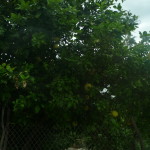
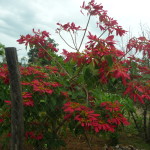
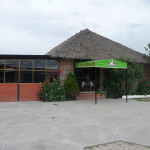
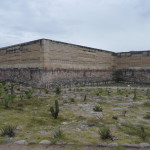
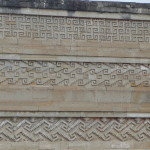
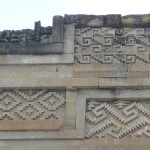
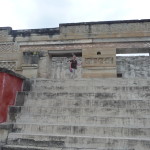
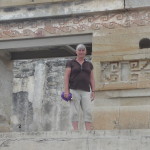
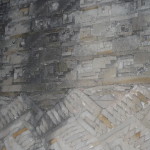
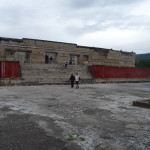
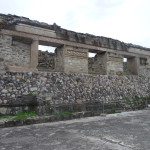
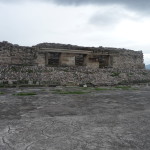
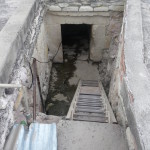
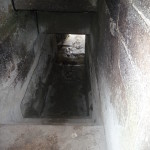
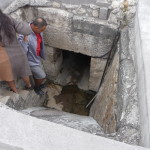
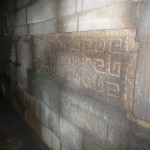
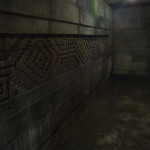
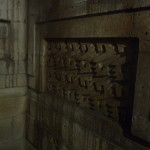
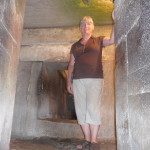
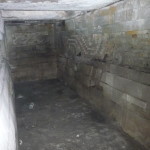
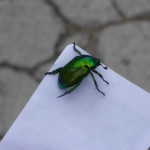
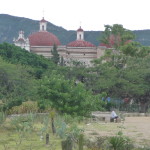
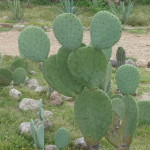
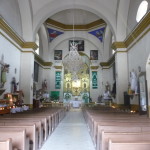
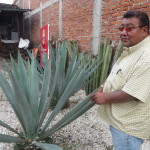
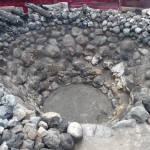
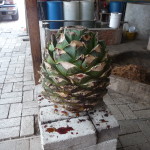
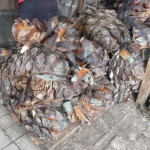
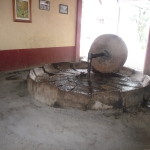
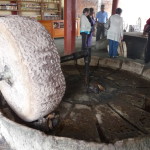
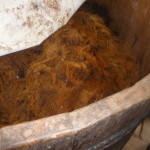
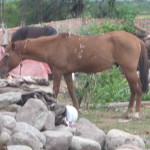
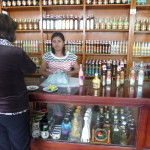
Me encantan tus fotos parte 1 y 2 en Oaxaca, Hermosas
gracias
Gracias Eduardo,
Espero que todo esta bien contigo y la familia. Hoy, por la manana, “I posted” otros photos, parte 3 …
Con much amor
-Brenda